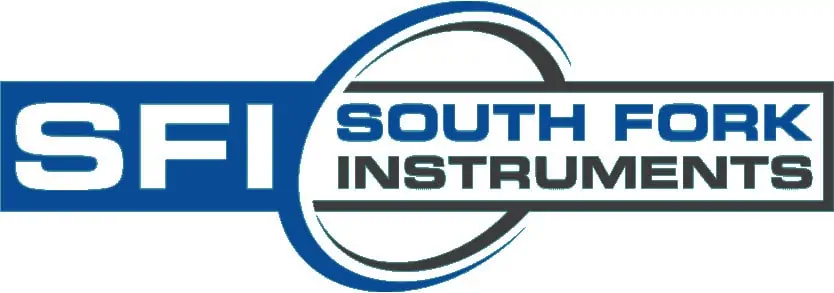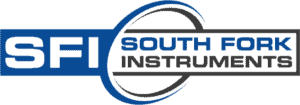pH measurement performance can directly impact process control and product quality, affecting everything from batch consistency to regulatory compliance. While selecting a pH probe may seem straightforward, each application environment presents distinct challenges. Chemical processing facilities, pharmaceutical operations, and food production lines in particular each demand specific probe technologies suited to their conditions.
Key Factors in pH Probe Selection
Selecting the right pH sensor requires evaluating multiple operational parameters. Each factor influences not just measurement performance, but also probe longevity and maintenance requirements.
Temperature Tolerance
Process temperature fluctuations affect both measurement accuracy and probe longevity. Standard glass probes typically operate between 0-80°C, while specialized probes handle extremes from -30°C to 130°C. Temperature cycling, particularly in CIP/SIP processes, accelerates probe wear and demands robust construction.
Pressure Rating
Operating pressure dictates probe construction and housing requirements. While standard probes function at atmospheric pressure, many industrial processes demand ratings of 6-10 bar (87-145 psi) or higher. These high-pressure environments require reinforced designs with specialized seals and housing materials to maintain measurement integrity.
Chemical Resistance
The process media’s chemical composition determines both probe lifetime and measurement reliability. Aggressive environments containing strong acids, bases, or organic solvents quickly degrade “standard” construction materials. Applications with harsh chemicals can benefit from probes featuring PEEK or PVDF bodies, which offer superior resistance compared to glass or epoxy construction.
Accuracy Requirements
Application needs drive accuracy specifications. Wastewater treatment may accept ±0.2 pH units, while pharmaceutical production often requires ±0.02 pH precision. Higher accuracy demands typically necessitate more frequent calibration cycles and premium probe designs with advanced temperature compensation.
Maintenance Profile
Consider the full scope of maintenance requirements: cleaning frequency, calibration intervals, and replacement schedules. Probes installed with automatic cleaning systems command higher initial costs but reduce maintenance time in fouling applications. Digital probes simplify calibration procedures and provide advanced diagnostic capabilities for predictive maintenance.
pH Sensing Element Types
pH probe technology has evolved to meet diverse industrial needs. Each sensing element type offers distinct advantages and limitations.
Glass Electrodes
- Industry standard for accuracy and chemical resistance
- Full pH range measurement (0-14)
- Temperature compensation from 0-80°C
- Ideal for controlled environments
- Common uses: laboratory analysis, chemical processing, water treatment
- Key limitation: breakage risk
ISFET Sensors
- Unbreakable silicon-chip technology
- Fast response time and compact size
- Excellent mechanical durability
- Suitable for food processing and biotechnology
- Requires protection from oxidizing agents
- Higher initial cost but longer lifespan
Antimony Electrodes
- Specialized for hydrofluoric acid applications
- Resistant to aggressive chemicals
- Primary uses: semiconductor manufacturing, metal treatment
- Metal-based sensing element
- Key limitation: limited pH range (2-11) and lower resolution (±0.1 pH)
Polymer-based Probes
- Organic membrane construction
- High resistance to physical impact
- Break-resistant design for food and pharma
- Superior fouling resistance
- Key limitations: susceptible to interference from other ions, slow response time and limited pH range
Reference Systems in pH Measurement
Reference System Fundamentals
A reference cell serves as the stable backbone of pH measurement, providing a consistent reference point while the sensing electrode responds to changes in hydrogen ion concentration. Traditional designs use a potassium chloride (KCl) electrolyte solution separated from the process fluid by a junction. This junction allows electrical contact while theoretically limiting contamination — though in practice, contamination through the junction is a major source of measurement problems.
Matching Reference Systems to Applications
Clean Water and Simple Solutions
Right Choice: Traditional liquid reference systems
- Low cost and simple design suitable for clean applications
- Easy to maintain
- Available with various junction materials (ceramic, PTFE, paper)
Wrong Choice: Premium non-porous or differential systems would be overkill and unnecessarily expensive
Food and Beverage Processing
Right Choice: Gel reference systems or polymeric references
- Eliminates risk of electrolyte contaminating product
- Better resistance to frequent cleaning cycles
- Compatible with CIP/SIP processes
Wrong Choice: Liquid references risk contamination and require too frequent maintenance
Chemical Processing
Right Choice: Polymeric reference systems / REFEX technology
- Superior resistance to chemical attack
- Minimal drift in aggressive environments
- Extended lifetime in harsh conditions
Wrong Choice: Traditional liquid or gel references quickly become poisoned or depleted
Wastewater Treatment
Right Choice: Differential probes or non-porous reference designs
- Handles high solids content without fouling
- Maintains stability despite varying conductivity
- Resistant to sulfide poisoning
Wrong Choice: Standard porous junctions quickly clog and fail
Higher Pressure Applications
Right Choice: REFEX technology or specialized designs
- Withstands pressure fluctuations
- Maintains stable reference under pressure
- Robust construction
Wrong Choice: Traditional liquid references risk leakage and instability
Reference System Types and Their Optimal Use
Traditional Liquid References
Best for:
- Laboratory applications
- Clean water monitoring
- Processes with regular maintenance access Avoid in:
- High-pressure applications
- Dirty or fouling environments
- Critical processes requiring minimal maintenance
Gel References
Best for:
- Moderate industrial applications
- Situations requiring reduced maintenance
- Clean to moderately dirty processes Avoid in:
- High-temperature applications
- Extremely aggressive chemicals
- Applications requiring long-term stability
Polymeric References (including REFEX)
Best for:
- Harsh chemical environments
- High-pressure applications
- Processes requiring extended calibration intervals Avoid in:
- Cost-sensitive applications where simpler solutions would suffice
- Applications requiring frequent probe replacement
Differential Probes
Best for:
- Critical accuracy requirements
- Environments with significant electrical noise
- Processes with varying temperatures Avoid in:
- Space-constrained installations
- Simple applications where standard references suffice
- Budget-conscious projects
Key Factors for Reference System Selection
- Process Contamination Risk
- High Risk: Choose non-porous or polymeric references
- Low Risk: Traditional liquid references may suffice
- Maintenance Availability
- Limited Access: Opt for gel or polymeric systems
- Regular Access: Liquid references acceptable
- Process Pressure
- High Pressure: REFEX or specialized polymeric designs
- Atmospheric: Any reference type suitable
- Temperature Variations
- Extreme Cycling: Differential probes or REFEX technology
- Stable Temperature: Standard references acceptable
- Budget Constraints
- High: Traditional liquid or gel references
- Flexible: Consider lifetime costs of premium systems
Industry-Specific Probe Recommendations
Food & Beverage
The food and beverage industry prioritizes product safety and contamination prevention. Non-glass ISFET and polymer-based sensors eliminate breakage risks while withstanding frequent cleaning cycles.
Key requirements:
- FDA-compliant materials with sanitary certifications
- CIP/SIP compatibility
- Temperature shock resistance
- Fast response time
Chemical Processing
Chemical processing environments demand robust glass electrodes for chemical resistance and measurement stability. Specific applications, like hydrofluoric acid, require specialized solutions such as antimony electrodes.
Process requirements:
- Chemical compatibility
- High-temperature stability
- Appropriate pressure rating
- PTFE or PEEK components
Wastewater Treatment
Wastewater facilities need probes that handle high solids content and varying conductivity. Flat or dome-shaped membranes resist fouling, while self-cleaning systems reduce maintenance.
System features:
- Integrated spray cleaning
- Robust construction
- Easy maintenance access
- Fouling resistant reference junction
Pharmaceutical Manufacturing
The pharmaceutical industry requires detailed documentation and precise control. Digital probe systems provide compliance documentation while ensuring measurement accuracy.
Essential features:
- USP Class VI-compliant materials
- Comprehensive documentation
- High precision measurement
- Redundant systems for critical processes
Special Considerations
Clean-in-Place Requirements
CIP systems demand probes that withstand temperature shock, aggressive chemicals, and pressure fluctuations. Material certification and construction quality are crucial for reliable performance.
Hazardous Area Certifications
Explosive environments require appropriate certifications (ATEX, IECEx, FM) and proper system integration, including compatible cables and transmitters.
Digital vs. Analog Output
Digital systems offer advanced diagnostics and data management but cost more initially. Analog systems provide simpler, cost-effective solutions for basic applications. Many facilities successfully use both, matching technology to application criticality.
Maintenance Best Practices
Calibration
- Use certified buffers matched to measurement range
- Follow consistent procedures
- Document results
- Verify response after calibration
Cleaning
Match methods to fouling type:
- Organic: Enzymatic cleaners
- Mineral: Acid solutions
- Regular buildup: Preventive cleaning
- Always verify response post-cleaning
Storage
- Use proper storage solutions (not deionized water)
- Maintain moisture on sensing elements
- Clean before long-term storage
- Protect from damage
- Monitor regularly
The Bottom Line About Making the Right Choice
While premium technologies like REFEX or differential probes may seem expensive initially, they often prove most economical in demanding applications through reduced maintenance and longer service life. Conversely, simpler technologies can provide excellent value in appropriate applications. The key is matching the reference system to your specific process conditions and operational requirements.
Contact South Fork Instruments
For precise pH monitoring solutions that meet your industry’s specific needs, explore South Fork Instruments‘ extensive range of products, including the innovative REFEX pH probes. These probes offer unparalleled durability and accuracy, ensuring reliable performance even in the most challenging environments. Contact South Fork today to learn more about our tailored solutions and what they can do for your operations.
Read More

